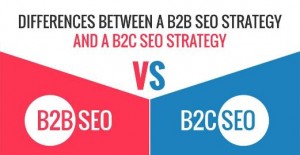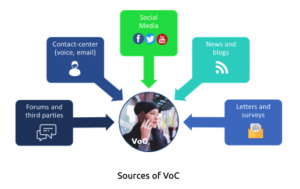Focus on the organization’s key objectives to prioritize projects and you can cut down on the noise of low-value work.
We’re so caught up in the world of being busy, that we’re barely able to come up for air. Then we wonder why our marketers are burnt out, deadlines are missed and quality stinks. The best companies I’ve worked with have streamlined corporate initiatives that focus on value, which actually helps productivity.
Learn how agile marketing can help keep your marketing initiatives focused, cut down on low-value work and improve your overall output.
Focus on high-value initiatives
With agile marketing, teams order work requests in a single, prioritized backlog. With this simple technique, it forces the conversation about: “What’s our highest priority?”
The marketing backlog allows the team and stakeholders to see everything being asked of them in one place. I have yet to meet a marketing team that doesn’t have enough work to do. Everyone is constrained with budgets, resources and time. Another important question that comes out of the prioritization process is: “What aren’t we going to do?”
One of my retail clients quickly learned when they put together all of the work various stakeholders were asking them to do (not even counting any of their own ideas), that it would take more than five years to get through the list!
They had the same number of people and the same work as before agile, but by seeing everything in one place and gaining a better understanding of how fast the team can complete work, they realized they had put themselves into a situation that was destined for failure! This left them with two choices: hire more people, or decide what isn’t going to get done.
Since they didn’t have the budget to hire five more teams (which is how many more were needed to get through the current backlog in a reasonable amount of time), they decided to start looking at what work is the most valuable to the company.
Determine what valuable work means to your company
When marketers first try agile marketing and are asked to prioritize a marketing backlog, they’re often faced with a big problem – they don’t know how to prioritize one work request over another. They find themselves caught in the middle of power struggles between stakeholders fighting for their initiatives.
To combat this problem and to effectively say no to work that is lower value, the company needs to align at a higher level and really understand what the key objectives are for the organization.
If your company doesn’t have clear business objectives, or if they aren’t rolling down to the marketers on the ground, this piece of the puzzle needs to get resolved. Once the teams have a clear idea on what the business values the most, they have a leg to stand on when saying no to work requests that are not aligned to the company’s larger priorities.
There are numerous studies out there that show when people are focused, they’re a lot more productive. With agile marketing, if teams can cut out the noise and distractions of work that is low value, they can spend more time, effort and energy creating really kick-butt campaigns that help drive the kind of business results the company is trying to accomplish.
3 ways to help overloaded marketers and improve productivity
If your marketing team is plagued with too much work and too many competing priorities, here are three things you can try right now to help streamline work and improve productivity.
1. Start a marketing backlog
The simple act of putting all work requests into one ordered list is an inexpensive and easy way that you can really see everything being asked of the team. A tool like Trello or Monday can help organize this for you electronically.
2. Empower one person to own prioritization
By empowering a single owner who’s responsible for making prioritization decisions, you can shelter the team from constant requests. This person, often referred to as a product owner in Scrum, needs to be empowered to say no to work that doesn’t have high value.
3. Play a prioritization game
If your company has too many competing projects, play a game to get them to prioritize! A fun game you can try is to bring in all of the stakeholders into a room and put each of the large projects on a large notecard on the wall. Then give everyone Monopoly money. Each project costs a different amount based on how time-consuming it will be, such as $1 for a small effort, $5 for a medium effort and $20 for a large effort. Give them each only enough money to “buy” a few of the projects, but not all of them. Have each person place their money on their chosen project(s). Then use this as a conversation starter to talk about what’s most important to the company’s big picture.
When your company has clear priorities and time to focus on the most critical, high-value marketing work, you’ll be able to realize the benefits of agile marketing and have high-performing teams.
Opinions expressed in this article are those of the guest author and not necessarily Marketing Land. Staff authors are listed here.
Marketing Land – Internet Marketing News, Strategies & Tips
(50)









